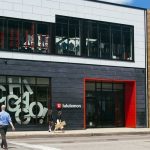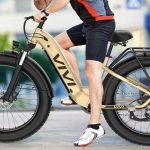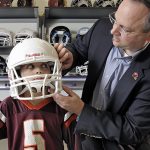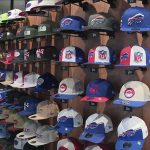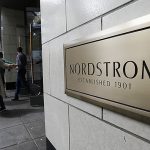Excluding the impact of currency-fluctuations, Adidas Group reported a blowout fourth quarter, with currency-neutral (C-N) sales ahead 12 percent and operating profit up almost fourfold compared to the prior year. On a C-N basis, Adidas Brand sales grew 10.3 percent, Reebok advanced 8.9 percent, and TaylorMade Adidas Golf expanded 25.3 percent.
Unfortunately, weaknesses in emerging market currencies like Russia's ruble and Argentina's peso dramatically cut into growth on a reported basis. Sales in euro terms grew only 3.3 percent to €3.48 billion ($4.78 bn).
Worse, currency translation is expected to have a “significant negative impact” on Adidas’ top-line growth in reported terms in 2014, despite the positive impact of the soccer World Cup in Brazil later this summer. Russia’s dispute with Ukraine also adds to this year’s foreign-exchange risk and may make consumers in the region nervous, CEO Herbert Hainer added during a conference call with analysts. In sum, these outside factors are expected to challenge Adidas’ ability to reach its Route 2015 targets.
“The currency situation, as it is right now, represents a significant risk to the achievement of our goals,” said Hainer. “We cannot ignore the significant weakness of the Russian ruble since the beginning of the year as well as the current uncertainty in the region, both of which have added considerable risk to our results in euros.”
Adidas had set targets for 2015 sales of €17 billion and an operating margin of 11 percent, both looking ambitious given a margin target of 8.5 to 9 percent for 2014 and 2013 sales falling 2.6 percent to €14.5 billion ($19.9 bn).
The currency fluctuations overshadowed healthy underlying business conditions across Adidas’ portfolio in the fourth quarter. The 12 percent gain on a C-N basis was above expectations. Both sales and earnings met revised full year targets from September, despite a further worsening of currency exchange rates that impacted top-line results by 9 percent in the quarter.
On a C-N basis, Wholesale sales in the quarter grew 7.9 percent to €2.05 billion ($2.82 bn). Retail grew 14.8 percent on a C-N basis to €934 million ($1.28 bn) with Retail comps ahead 3 percent and e-commerce jumping 59 percent. Other Businesses (TaylorMade Adidas Golf, Rockport, Reebok-CCM Hockey) jumped 27.8 percent to €493 million ($677.1 mm). In euro terms, Wholesale sales were down 0.5 percent, Retail was up 5.9 percent and Other Businesses climbed 16.2 percent.
Gross margins decreased 0.1 percentage points to 47.5 percent. The benefits of more favorable pricing, product and regional sales mix as well as lower input costs during the fourth quarter was offset by the negative effects resulting from a less favorable hedging rate.
Other operating expenses as a percentage of sales decreased 2.5 percentage points to 46.5 percent as higher expenditure related to Adidas’ expansion of own-retail activities was more than offset by lower marketing expenditure as well as a decrease in operating overhead expenses.
Excluding goodwill impairment losses, operating profit increased significantly to €98 million ($134.6 mm) compared to €26 million in the prior year. This represents an improvement in operating margin excluding goodwill impairment of 2.0 percentage points. Including goodwill impairment losses, the Group reported an operating profit of €45 million ($61.8 mm) compared to an operating loss of €239 million in 2012. For the quarter, impairment charges of €52 million ($71.4 mm) were tied to its Iberia region and its North American retail segment while the year-ago charges of €265 million were tied to Reebok writedowns.
Net income attributable to shareholders excluding goodwill impairment losses amounted to €42 million ($57.7 mm) in the quarter versus a net loss before charges of €7 million last year.
For the full year, Adidas’ sales grew 3 percent on C-N basis but were down 2.6 percent on a reported basis. Accumulated for the twelve months, currencies wiped out around €750 million ($1.03 bn) from results. The growth was short of management’s initial expectations of an increase at a mid-single-digit rate. The year’s shortfall was placed not only negative currency developments, but also distribution constraints in the Russia/CIS regions as well as a stalling global golf market.
By region, revenues in North America grew 14.2 percent in the quarter on a C-N basis to €828 million ($114 bn), driven by double-digit sales increases at Adidas, TaylorMade-Adidas Golf and Reebok-CCM Hockey. Sales gained 7.7 percent on a reported basis. In the year, North America revenues on a C-N basis was up 2.2 percent to €3.36 billion ($4.61 bn), with increases in both the USA and Canada.
Hainer noted that full-year developed lower than initial expectations in North America as “some lifestyle trends moved against us,” and basketball showed lower-than-expected growth due to the injury of Chicago Bulls’ star guard, Derrick Rose. TaylorMade was also impacted by overall sluggishness in the golf market. But trends picked up in the fourth quarter, led by a 10 percent gain for Adidas Brand. Running and football (soccer) were standout categories, growing more than 40 percent in the quarter.
Among other regions, Western Europe revenues were ahead 3.4 percent C-N in the quarter to €747 million ($1.03 bn) and added 1.9 percent on a reported basis. The gains were supported by strong double-digit growth at Reebok and TaylorMade-Adidas Golf. Full-year sales were down 5.8 percent C-N to €3.8 billion ($5.2 bn), mainly due to sales declines in the UK, Italy and Spain. The full-year decline was largely attributed to the absence of the UEFA EURO 2012 and the London 2012 Olympic Games, the latter having about a 2 percentage point impact on the region’s result. Hainer said it also reflected “continuously negative economic climate and lackluster consumer confidence” in most European markets, especially in Southern Europe, as well as “a fierce competitive battle for market leadership in this important region.”
Greater China increased 7.5 percent C-N to €411 million ($564.3 mm) with reported sales ahead 4.5 percent. The gains were driven by strong double-digit sales gains at Adidas Originals & Sport Style. For the full year, C-N revenues were ahead 7.1 percent to €1.66 billion ($2.28 bn). Hainer noted that Adidas continues to fend off Nike and other local competitors in the region. He added, “All research confirms that we are one of the hottest brands in China right now, with a fantastic brand footprint, being in over 7,600 stores in more than 1,000 cities.”
In its Other Asian Markets region, revenues jumped 14.5 percent to €640 million ($878.7 mm) but were down 3.9 percent on a reported basis. The C-N increases were due to double-digit increases at Adidas and TaylorMade-Adidas Golf. For the year, sales advanced 5.3 percent on a C-N basis to €2.21 billion ($3.03 bn), driven by strong increases in India, South Korea and Australia
Latin America's sales ran ahead 32.4 percent in the quarter to €391 million ($536.8 mm), due to double-digit increases at Adidas and TaylorMade-Adidas Golf. Sales gained 12.7 percent on reported basis. In the year, Latin America on a C-N basis jumped 18.6 percent to €1.58 billion ($2.17 bn), with double- digit increases in most of the region’s major markets, in particular Argentina, Colombia and Mexico. Hainer said the gains were “driven by the rising anticipation and excitement ahead of the World Cup in Brazil, but it also reflects our continuous investments and improvements in this vibrant part of the world.”
European Emerging Markets were up 10.7 percent C-N in the quarter to €462 million ($634.3 mm), supported by strong double-digit growth at Reebok and TaylorMade-Adidas Golf. Reported sales were up 0.2 percent. For the year, European Emerging Markets on a C-N basis added 3.5 percent to €1.89 billion ($2.59 bn), as a result of sales growth in most of the region’s major markets.
Hainer said Adidas rectified its distribution issues in the Russia/CIS area in the fourth quarter and sales of Russia grew 8 percent in the period, supported by build-up around the Sochi Olympic Games. Hainer said Adidas will continue to further look to build share in Russia and expects a “major role in the build up” to the 2018 FIFA World Cup in Russia while also noting the current uncertainties near-term around the Russian ruble and the Ukraine standoff.
By brand, the 10.3 percent growth for Adidas Brand was led by running, football, and sports lifestyle. On a reported basis, Adidas grew 1.8 percent to €2.58 billion ($3.54 bn). For the year, Adidas Brand sales added 2.5 percent on a C-N basis to €11.06 billion ($15.2 bn). Adidas comp store sales were up 3 percent for the quarter and remained stable for the full year.
Hainer noted that Running sales for Adidas Brand grew 17 percent in 2013, led by newer innovations such as Boost, Springblade, and the miCoach Smart Run watch as well as gains in established families such as Supernova or Essentials. In the fourth quarter, running sales jumped 31 percent.
Football saw 35 percent growth in the fourth quarter, fueled by “a fantastic start of our World Cup product campaign and very good Christmas sales,” according to Hainer. Supporting football sales was the launch of four new boots in each of its key ranges – adizero f50, Predator, Nitrocharge and 11Pro as well as the introduction of 2014 FIFA World Cup kits for Spain, Argentina and Germany and other sponsored countries, and the introduction of Brazuca, the official match ball. In the early weeks of the year, sales of football items were up over 200 percent compared to the last World Cup in 2010.
For the year, football sales were up 4 percent despite tough comparisons against the EURO 2012 tournament.
Overall, Hainer stressed that Adidas is “leading in this category that is so close to the Adidas DNA.” That includes Adidas’ in its home country in Germany, including footwear there. Globally, Adidas and Nike command 80 to 95 percent share in almost all football markets, and Hainer stressed that “wherever we might be in second place, we will attack and we will win back market share.”
Sports lifestyle sales for Adidas Brand accelerated to 12 percent growth in the fourth quarter after showing a mid-single digit gain in the first nine months. Revenues for the year were well in excess of €3.2 billion ($4.4 bn).
Particularly strong has been its youth-oriented label, Adidas NEO, with sales ahead 14 percent in 2013, reaching almost €700 million ($961.1 mm). Overall for Adidas Brand, Hainer also noted a focus on innovation and “strong channel” led to a 2 percent percentage point increase in the gross margin in the year.
For Reebok, reported sales were down to €426 million ($584.9 mm). But the 8.9 percent C-N gain in the quarter helped the brand return to growth on a C-N basis for the year, up 1.6 percent to €1.6 billion ($2.2 bn). Excluding the impact of the loss of its NFL contract to Nike, revenues grew 4 percent in the year. Reebok comp store sales remained unchanged for the quarter and were down 3 percent for the full year.
Hainer also noted that Reebok’s gross margins improved 4 percentage points over the year to 39.7 percent, close to the 40 percent goal of Reebok’s Route 2015 plan. Hainer said Reebok continues to benefit from its renewed positioning as “the fitness brand.” Sales in 2013 increased 18 percent in fitness training, 37 percent in Classics and more than 300 percent in Studio, albeit from a small base.
For TaylorMade, the 25.3 percent fourth-quarter growth on C-N basis reflects the successful launch of SLDR and JetSpeed in traditionally a quiet-launch season. Reported sales were up 11.4 percent in the quarter to €304 million ($417.4 mm). For the year, sales on C-N basis grew 3.1 percent to €1.29 billion ($1.77 bn).
Hainer said TaylorMade cleaned up inventories at the expense of margins. But that helped support the launches and led to “good market share” increases in irons and footwear, with Speedblade and Adizero, respectively.
Among other brands in the Other Businesses segment, Rockport jumped 17.6 percent on a C-N to €87 million ($119.4 mm) in the quarter and grew 11.2 percent on a reported basis. For the year, C-N revenues increased 5.8 percent to €289 million ($396.8 mm.)
Reebok-CCM’s sales catapulted 55.4 percent to €78 million ($107.1 mm), and expanded 45.0 percent on a reported basis. For the year, Reebok-CCM’s sales grew 11.1 C-N to €260 million ($357.0 mm.)
For 2014, Adidas companywide continues to expect C-N sales to increase at a high-single-digit rate, benefiting from heightened visibility as the Official Partner of the 2014 FIFA World Cup in Brazil. Sales are also expected to be boosted by Adidas’ high exposure to fast-growing emerging markets as well as the further expansion of Retail.
However, Adidas officials projected foreign exchange effects to have a mid single-digit percentage point hit to reported sales growth in 2014 and to cut operating profit by a range of €150 to €250 million.
On the call, Robin Stalker, CFO, noted that the average rate of the Japanese yen was 21 percent lower versus the euro in 2013, the Argentine peso, 20 percent; the Brazilian real, 12 percent; the Australian dollar and Turkish lira both 9 percent; and the Russian ruble and Canadian dollar, both 6 percent. So far in the current year, the Argentine peso has already devalued another 32 percent versus the euro, the Turkish lira 17 percent, the Russian rouble 15 percent, the Brazilian real, Australian dollar and Canadian dollar 11 percent, and the Japanese yen a further 7 percent.
Net income is expected to be at a level between €830 million and €930 million compared to the 2013 net income, excluding goodwill impairment losses, of €839 million. Analysts on average were looking for €1 billion.
Hainer said the wide earnings range reflects the volatile currency climate. But Hainer remarked that since 2010, Adidas generated a 14 percent compound annual earnings growth rate and the company expects the bottom line will grow in euro terms at “a much faster rate” than revenues in 2014. Said Hainer, “As long as currencies don’t worsen materially from today’s standpoint, I am confident that we will achieve a double-digit compound annual earnings growth rate over the Route 2015 period.”
Hainer also touched on the company’s board’s decision to extend his contract for another two years beyond 2015 until March 2017, in part to help with succession planning. He said the decision “”gives the company sufficient time to ensure a smooth transition at the helm of the Adidas Group and to optimally facilitate the process of succession for the company. In addition, we will do everything in our power to successfully execute against our strategic business plan Route 2015. At the same time, we will define our new long-term strategy together with the next generation of company leaders, in order to prepare the Adidas Group for another era of growth and success.”

